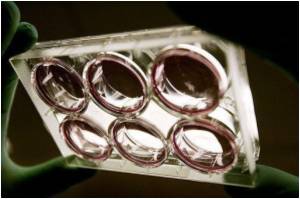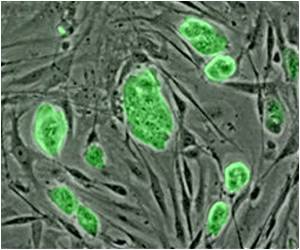At Rice University and Baylor College of Medicine (BCM), structural biologists have captured the first three-dimensional crystalline snapshot of a critical but fleeting process that takes place thousands of times per second in each human cell.

The biological "freeze-frame" shows the initial step in the formation of actin, a sturdy strand-like filament that is vital for humans. Actin filaments help cells maintain their shape. The filaments, which are called F-actin, also play key roles in muscle contraction, cell division and other critical processes.
"One of the major distinctions between cancerous cells and healthy cells is their shape," said study co-author Jianpeng Ma, professor of bioengineering at Rice and the Lodwick T. Bolin Professor of Biochemistry at BCM. "There is a correlation between healthy shape and well-regulated cell growth, and cancer cells are often ugly and ill-shaped compared to healthy cells."
F-actin was discovered in 1887, but despite the more than 18,000 actin-related studies in scientific literature, biologists have struggled to unlock some of its secrets. For example, F-actin is a polymer made of many smaller proteins called monomers. These building blocks, which are called G-actin, self-assemble end to end to form F-actin. But the self-assembly process is so efficient that scientists have been unable to see what happens when the first two or three monomers come together to form the nucleus of a filament. The F-actin filaments inside cells are constantly being built, torn apart and rebuilt.
Source-Eurekalert
 MEDINDIA
MEDINDIA




 Email
Email






